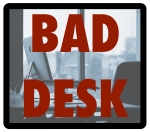[fusion_builder_container hundred_percent=”no” equal_height_columns=”no” menu_anchor=”” hide_on_mobile=”small-visibility,medium-visibility,large-visibility” class=”” id=”” background_color=”” background_image=”” background_position=”center center” background_repeat=”no-repeat” fade=”no” background_parallax=”none” parallax_speed=”0.3″ video_mp4=”” video_webm=”” video_ogv=”” video_url=”” video_aspect_ratio=”16:9″ video_loop=”yes” video_mute=”yes” overlay_color=”” video_preview_image=”” border_size=”” border_color=”” border_style=”solid” padding_top=”” padding_bottom=”” padding_left=”” padding_right=””][fusion_builder_row][fusion_builder_column type=”1_1″ layout=”1_1″ background_position=”left top” background_color=”” border_size=”” border_color=”” border_style=”solid” border_position=”all” spacing=”yes” background_image=”” background_repeat=”no-repeat” padding_top=”” padding_right=”” padding_bottom=”” padding_left=”” margin_top=”0px” margin_bottom=”0px” class=”” id=”” animation_type=”” animation_speed=”0.3″ animation_direction=”left” hide_on_mobile=”small-visibility,medium-visibility,large-visibility” center_content=”no” last=”no” min_height=”” hover_type=”none” link=””][fusion_text columns=”” column_min_width=”” column_spacing=”” rule_style=”default” rule_size=”” rule_color=”” hide_on_mobile=”small-visibility,medium-visibility,large-visibility” class=”” id=””]
Health is always on the clock. It never takes a day off. We are always on a continuum from the unhealthiest to the healthiest we have ever been. For most of us, we do not work in the health and fitness industry, so extra effort often needs to be taken to allow us the best chance at living a healthy and active lifestyle.

Tackling our health while at work seems to be a nuisance, but it is important considering that half our waking hours is spent ‘on the clock’. I previously discussed why exercise is not everything, so looking at what health behaviors are more or less likely to occur in the workplace is important.
However, there is also a range of health services provided in the workplace. From nothing, to high-end gyms located on site, and even paid-for healthy lunches. In this article, I consider the variety of work health topics that you may be important for you or your organization.
How is health addressed at work?
To begin, we need to evaluate how health programs are commonly introduced. If there is a culture of health, it is usually developed through some type of wellness committee or worksite wellness program.

These programs and committees are devoted to bringing health initiatives into the organization and sometimes into the local community (company 5K fundraisers). You often see their end results in the form of: health fairs, blood drives, step challenges, motivational posters by the stairs, discounts on gym memberships and healthy snack days. Organizations also go as far as training individuals to match the work demands (tree planters in Canada undergo a preseason training program much like NFL players; Fit to Plant).
Why do companies even care about employee health?
Simply put, it’s good for business. Each employee is one important piece in the company’s machine. If one piece breaks down, well, we all have seen those days of “picking up the slack” when somebody is out sick.

So, companies (especially large ones) have a vested interest in taking care of each person in their machine. The success of health initiatives and programs are commonly measured by how much absenteeism (how often workers call off) and presenteeism (showing up to work but being unproductive) occurs.
When employees are healthier, more work gets done. Return on investment (ROI) is a common business measure that determines whether or the company is spending the right money in the right places. The ROI on worker health is huge. Investing in worker health saves money in the long run. The Society of Human Resource Management (SHRM) recently reported a return of 6:1. That is…
For every dollar spent on employee health, six dollars was saved!!!
A large portion of this typically comes from reduced health insurance costs. For example, when employees are no longer diagnosed as diabetic or obese. This goes without saying, but companies are interested in building an overall culture of health and truly care about the well-being of its employees. It is not about just getting employees the healthiest to squeeze the most work out of them. Improving the health of staff is a clear win-win for both employers and employees.
What should you do if you work for yourself or your company does not offer any healthy programs ?
A healthy culture is a result of many actions. Only after employees and organizations engage in new behaviors (related to a healthier workplace) do we say, in hindsight, that a culture of health exists. Here is a list of actions to get you started to beginning planting the seeds of your very own workplace health culture:
1. Start with the basics: Reach a minimum of level exercise each week

Review the physical activity guidelines, and progress from there. Knowing how much physical activity we should be getting on a regular basis is the first step. You may quickly learn that colleagues may be interested in more exercise during the work day. I have friends that exercise during their lunch break together.
2. If you have a sedentary job (work at a desk), get up and move.

Review the sedentary behavior guidelines. Incorporate as much standing, stretching, and walking throughout the entire day…not just before or after work. See a previous article, Bad Desk for more tips. You can even start small by standing in meetings (it is awkward, but trust me, you get over it after a while…and other people start doing it too!)
3. Change your office environment.

This can include getting your office ergonomically sound (no point in straining your neck all day because we know ways to avoid it). The Mayo Clinic offers easy to follow of guidelines. The Occupational Safety and Health Administration (OSHA) offers another ergonomics tool.
Other options include building a standing desk, taking your personal trashcan out of your office, removing extra office supplies from your desk, and ditching your comfy executive chair (its bad for your back) for a stool.
4. Form your own wellness committee and advocate for healthier workplace options

Get Human Resources (HR) involved. Large scale health programs typically run through HR in some way. As I mentioned above, health doesn’t take a day off, so the sooner healthy behaviors get going the better. You may even find that your insurance plan already offers discounts, you just have to check the right box. Other simple solutions can include starting a company softball team, having a walking lunch, or watching health related videos on youtube during breaks.
In conclusion…
These 4 ideas are not all the answers, but can start steering you or your company in the right direction. In the meantime, they can serve as your very own “mini-wellness program.” Beginning with behavioral and environmental solutions described above will help build the foundation of a healthy work culture.
A big thank you to Advisory Board Member Manny Rodriguez for being the catalyst of this article.
[/fusion_text][/fusion_builder_column][/fusion_builder_row][/fusion_builder_container]


